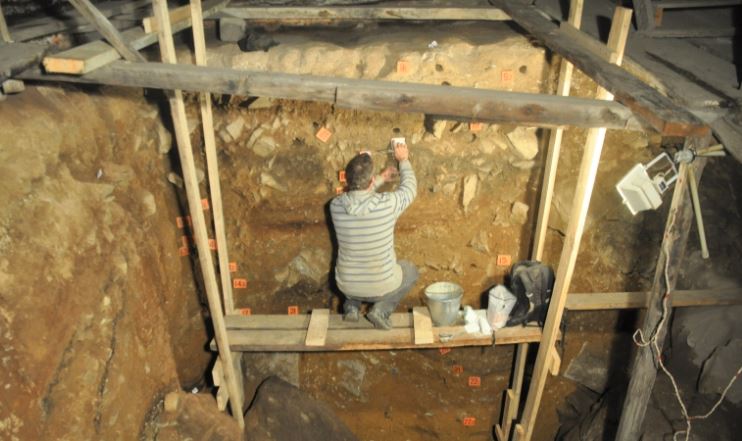
A new study of soil samples from 13 archaeological sites in Europe, Asia, Africa and North America paves the way for fresh analysis of ancient DNA from sediment (‘sedaDNA’) preserved around the world in ‘plastic’ resin.
The research by an international team led by the Max Planck Institute for Evolutionary Anthropology and the Flinders University Microarchaeology Laboratory, with other experts from across Europe and Australia, explores how ancient human, animal and plant DNA can be preserved in blocks of resin-soaked sediment for tens of thousands of years.
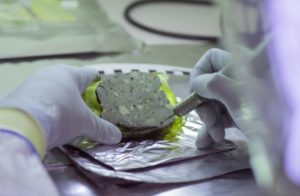
The preservation that comes from fixing the sediment in resin allowed the team to pinpoint at the micro-scale the origins of the DNA within the “chaotic mix” of sediments and organic components, showing that there are ‘hot spot’ concentrations of genetic material in bone and fossil faeces (‘coprolites’), explains Flinders University geo-archaeologist Associate Professor Mike Morley.
This means that stockpiles of resin-impregnated archaeological sediment could become the next frontier of research in the quest for major discoveries about human and plant evolution, the researchers say in a new paper in Proceedings of the National Academy of Sciences of the United States of America (PNAS).
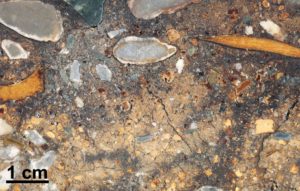
“This research not only sheds light on the little known complexities of how sediment forms in these sites over tens of thousands of years, but also opens up a new era of ‘scientific excavation’ of archaeological sediments stored in laboratories around the world,” says Flinders University Associate Professor Morley, from the College of Humanities, Arts and Social Sciences
“In an era of restricted travel, these blocks of fixed sediments could be used to curate sedaDNA that are preserved within microscopic fragments of bone and coprolite (fossil faeces) of the animals and humans of that time – including Neanderthal found in the Denisova Cave complex in Siberia.”
ARC Research Fellow Associate Professor Mike Morley, an archaeologist who applies geological techniques to reconstruct the formation of sediment and sites, took part in excavations at the world famous Denisova Cave site in the Altai Mountains in south-central Siberia where ancient DNA from Neandertals, Denisovans and modern humans has been retrieved from sediments that were studied at the microscopic level.
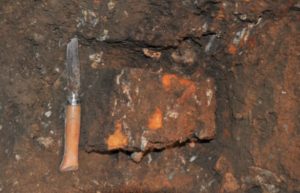
The world authorities in palaeogenomics at the Max Planck Institute in Leipzig, Germany, showed that sections of sediment blocks preserve DNA molecules that remain stable over many millennia. The team successfully extracted DNA from blocks prepared as long as 40 years ago and showed that the process of impregnating sediments with liquid plastic does not affect DNA survival.
“This study is a big step closer to understanding precisely where and under what conditions ancient DNA is preserved in sediments,” Associate Professor Morley says.
Sediments in which archaeological finds are embedded have long been regarded by most archaeologists as unimportant by-products of excavations. However, in recent years it has been shown that sediments can contain ancient biomolecules, including DNA.
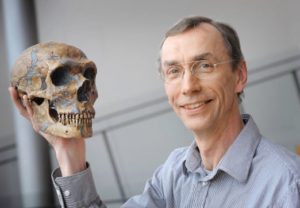
“The retrieval of ancient human and faunal DNA from sediments offers exciting new opportunities to investigate the geographical and temporal distribution of ancient humans and other organisms at sites where their skeletal remains are rare or absent,” says Dr Matthias Meyer, senior author of the study and researcher at the Max Planck Institute for Evolutionary Anthropology.
“This study is a big step closer to understand precisely where and under what conditions ancient DNA is preserved in sediments,” says second author Associate Professor Morley.
Dr Diyendo Massilani, the lead author of the study, was able to recover substantial amounts of Neanderthal DNA from only a few milligrams of sediment. He could identify the sex of the individuals who left their DNA behind, and showed that they belonged to a population related to a Neanderthal whose genome was previously reconstructed from a bone fragment discovered in the cave.
“The Neanderthal DNA in these small samples of plastic-embedded sediment was far more concentrated than what we typically find in loose material,” he says.
“With this approach it will become possible in the future to analyse the DNA of many different ancient human individuals from just a small cube of solidified sediment. It is amusing to think that this is presumably so because they used the cave as a toilet tens of thousands of years ago.”
The paper, ‘Microstratigraphic preservation of ancient faunal and hominin DNA in Pleistocene cave sediments‘ (2021) by Diyendo Massilani, Mike W Morley, Susan M Mentzer, Vera Aldeias, Benjamin Vernot, Christopher Miller, Mareike Stahlschmidt, Maxim B Kozlikin, Michael V Shunkov, Anatoly P Derevianko, Nicholas J Conard, Sarah Wurz, Christopher S Henshilwood, Javi Vasquez, Elena Essel, Sarah Nagel, Julia Richter, Birgit Nickel, Richard G Roberts, Svante Pääbo, Viviane Slon, Paul Goldberg and Matthias Meyer has been published in Proceedings of the National Academy of Sciences of the United States of America (PNAS) DOI: 10.1073/pnas.1918047117.
Funding for researchers, above, came from the Max Planck Society, European Research Council, Russian Foundation for Basic Research, Research Council of Norway, a South African National Research Foundation grant, the Argonaut Archaeological Research Fund, a Baden-Württemberg postdoc grant and two Australian Research Council fellowships.
Read more in The Conversation: Digging deep: DNA molecules in ancient dirt offer a treasure trove of clues to our past

